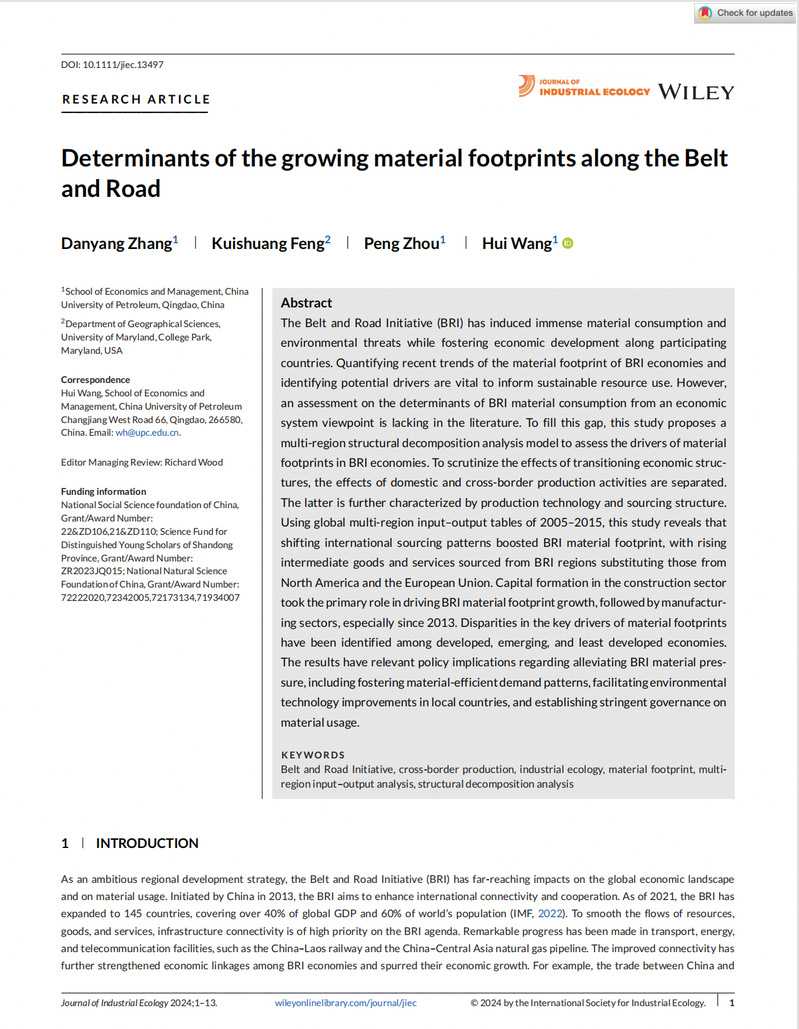The Belt and Road Initiative (BRI) has induced immense material consumption and environmental threats while fostering economic development along participating countries. Quantifying recent trends of the material footprint of BRI economies and identifying potential drivers are vital to inform sustainable resource use. However, an assessment on the determinants of BRI material consumption from an economic system viewpoint is lacking in the literature. To fill this gap, this study proposes a multi-region structural decomposition analysis model to assess the drivers of material footprints in BRI economies. To scrutinize the effects of transitioning economic structures, the effects of domestic and cross-border production activities are separated. The latter is further characterized by production technology and sourcing structure. Using global multi-region input–output tables of 2005–2015, this study reveals that shifting international sourcing patterns boosted BRI material footprint, with rising intermediate goods and services sourced from BRI regions substituting those from North America and the European Union. Capital formation in the construction sector took the primary role in driving BRI material footprint growth, followed by manufacturing sectors, especially since 2013. Disparities in the key drivers of material footprints have been identified among developed, emerging, and least developed economies. The results have relevant policy implications regarding alleviating BRI material pressure, including fostering material-efficient demand patterns, facilitating environmental technology improvements in local countries, and establishing stringent governance on material usage.
主要创新点:
2005-2015年间,国际外包模式转型推动了“一带一路”沿线资源足迹增加。
2013年以来,建筑行业资本形成在推动“一带一路”资源足迹增长方面发挥了主要作用,其次是制造业。
发达国家、新兴经济体和欠发达国家在资源足迹的主要驱动因素方面存在差异。

原文链接:https://doi.org/10.1111/jiec.13497
Edited:Xie Danyang



